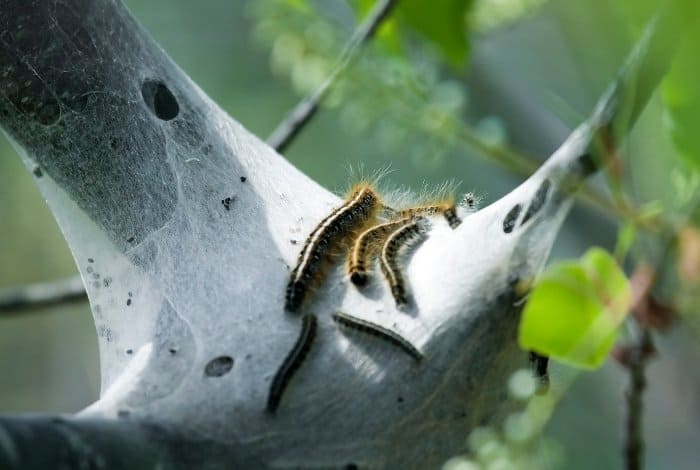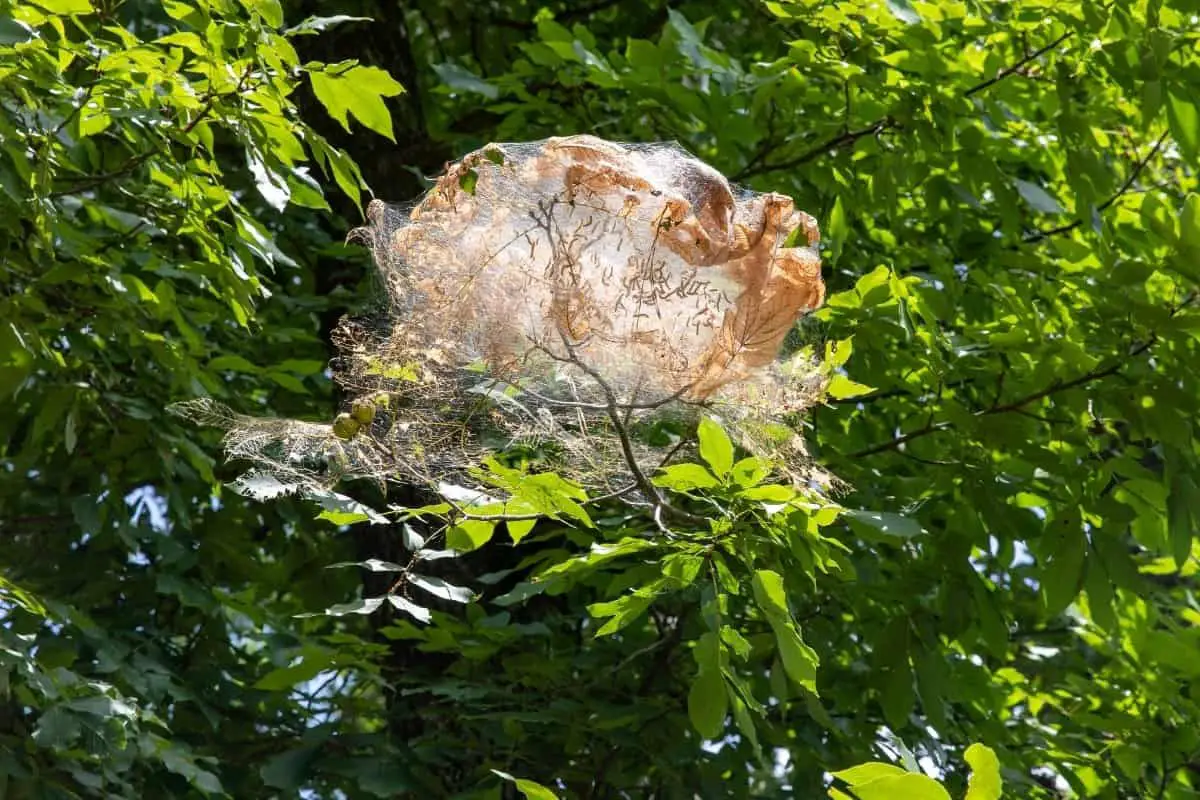Last Updated on January 3, 2023 by Tony Manhart
Just like every other pest, you might want to know how to get rid of sod webworm.
Sod webworms can be a menace to your lawn because they live and thrive in turfgrass. They can cause brown or yellow patches all over your turf and the situation can get worse as they increase in population.
Steps on How to Get Rid of Sod Webworm
Sod webworms might look tiny and harmless but they will definitely ruin your beautiful lawn. We will be teaching you how to identify these worms and how to go about eliminating sod webworms.

Inspection and Identification
The first step to take in eliminating any pest causing insect is identification. Determine and be sure of what you are up against.
Sod webworms begin to surface around spring up until summer.
The larva of the snout moths adult stage is the sod webworms. It is this larva that will do most of the damages to your lawn.
It’s easy to identify sub webworms activities on your lawn. Sod webworms will eat the top of your turf and make your turf look like grass blades. They will also leave brown patches on your lawn.
You might want to get down on your knees and use your hands to part your grass and look for some worms. Sod webworms are light green or grayish-brown in color.
Sod webworms can hide in burrows when they are inactive. To make your search easy and lure them out, you can simply apply a mixture of liquid dishwasher and water. Apply on suspected areas or patches. This will push them out.
Organic Laboratories Nature-safe insecticide
Read about How to get rid of aphids
Treatments on How to Get Rid of Sod Webworm
After you must have confirmed the presence of sod webworms in your lawn you can now proceed to treatments. Have in mind that these worms are active at night.
Below are some treatments:
- Water regularly: sod webworms thrive in dry thatch so try as much as possible to water your lawn to keep it from drying out. If your lawn is slightly infested, you can simply manage the affected area by keeping it moist and raking the soil. Whenever the weather is hot, always water your lawn as much as possible.
- Beneficial nematodes: another effective control method is the use of beneficial nematodes. Simple apply these living organisms (nematodes) on your lawn and wet your lawn so the sod webworms can be lured out and the nematodes can feed on them.
- Bacillus thuringiensis: this is a natural bacterium that lives in the soil. Spray the recommended dose on your lawn. It will eliminate the larvae of moths and any butterflies. Bacillus thuringiensis liquid spray does not cause any harm to beneficial insects or nematodes like bees and birds.
- Pesticides: you can also spray some insecticides if you have a severe infestation of sod webworms. Apply insecticides late afternoon when these worms are active.
Final Note
After successfully eliminating sod webworms, try to always keep your lawn wet and healthy. Mowing your lawn and removing thatch will destroy any sub webworm habitats and reduce re-infestation.
You can also decide to use endophyte enhanced grass for your lawn. This type of grass is resistant to insects and worms such as sod webworms.
FAQs
How do you kill sod webworms naturally?
One way to get rid of these pesky creatures is through the use of garlic or hot pepper spray. You can also place some coffee grounds around the affected areas or create a coffee-dye solution by adding three tablespoons of ground coffee into one gallon of water.
What time of year do you treat sod webworms?
Early spring. Why? Because sod webworms are more likely to survive if they are infested late in the season, but early treatment will limit their population size.
How long do sod webworms live?
Sod webworms feed on grass roots and can cause quite a bit of damage to your lawn if it not taken care of.
Sod webworms are able to live up to a year, but most only survive for about two months. They are most active during the warmer day time hours, which is why they generally target new growth or recently-mowed lawns.
If you notice that your sod webworms have moved outside of their normal range, you should look for signs of them such as brown patches in the grass or a thinning out of plants. If you find these signs and there is new growth visible, it’s likely that the worms have moved on.
Will my lawn recover from sod webworms?
Sod webworms are a type of caterpillar that feed on grass roots. They can be problematic and cause serious damage to lawns, but they can be controlled with the right treatment.
The question is: Can I recover my lawn from sod webworm damage?
The answer is: Yes, sod webworms are not a permanent problem. The worms will die off and your lawn will recover as long as you follow the steps below.
How long do sod webworm moths live?
The lifespan of a sod webworm moth is typically around one year, but they can live up to two years. They are also known as the most common type of webworm in North America.
How do you prevent sod webworms?
Sod webworms are the larvae of a moth, which burrow into the soil to lay eggs. They can be found in a variety of colors, but they are usually white. To prevent them from damaging your lawn or garden, you should use organic methods like handpicking them or using a pesticide.
Sod webworms are considered to be one of the most damaging pests in gardens and lawns. They can also cause damage to structures made from wood, stone, and brick. They normally live in moist soil and feed on plants by piercing their stems with their sharp mouthparts and sucking out plant juices.
One way to prevent sod webworms is by using organic methods like handpicking them or using a pesticide that targets specific insects like the sod webworm larva.
What time of year do you treat sod webworms?
Sod webworms are a type of beetle that feeds on the roots of grasses and other plants. They are usually found during the summer months.
In most cases, sod webworms are best treated in early spring or late fall.

Eunice is a gardener who loves to play in the dirt. She starts her day early in the morning, watering her plants and tending to her garden. She loves the smell of freshly cut grass and the feeling of sunshine on her back as she works. She‘s a master at creating beautiful flower arrangements and can often be found humming a tune as she tends to her plants. When she‘s not gardening, she loves to read books about nature and share her knowledge with others. Eunice loves gardening so much that she‘s even been known to talk to her plants!



